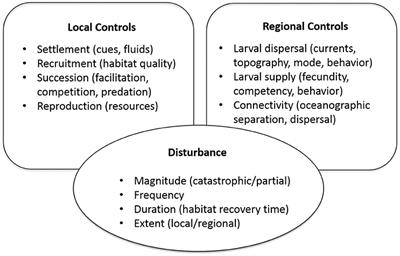1
Species inhabiting deep-sea hydrothermal vents are strongly influenced by the geological setting, as it provides the chemical-rich fluids supporting the food web, creates the patchwork of seafloor habitat, and generates catastrophic disturbances that can eradicate entire communities. The patches of vent habitat host a network of communities (a metacommunity) connected by dispersal of planktonic larvae. The dynamics of the metacommunity are influenced not only by birth rates, death rates and interactions of populations at the local site, but also by regional influences on dispersal from different sites. The connections to other communities provide a mechanism for dynamics at a local site to affect features of the regional biota. In this paper, we explore the challenges and potential benefits of applying metacommunity theory to vent communities, with a particular focus on effects of disturbance. We synthesize field observations to inform models and identify data gaps that need to be addressed to answer key questions including: (1) what is the influence of the magnitude and rate of disturbance on ecological attributes, such as time to extinction or resilience in a metacommunity; (2) what interactions between local and regional processes control species diversity, and (3) which communities are “hot spots” of key ecological significance. We conclude by assessing our ability to evaluate resilience of vent metacommunities to human disturbance (e.g., deep-sea mining). Although the...
You must log in or register to comment.


